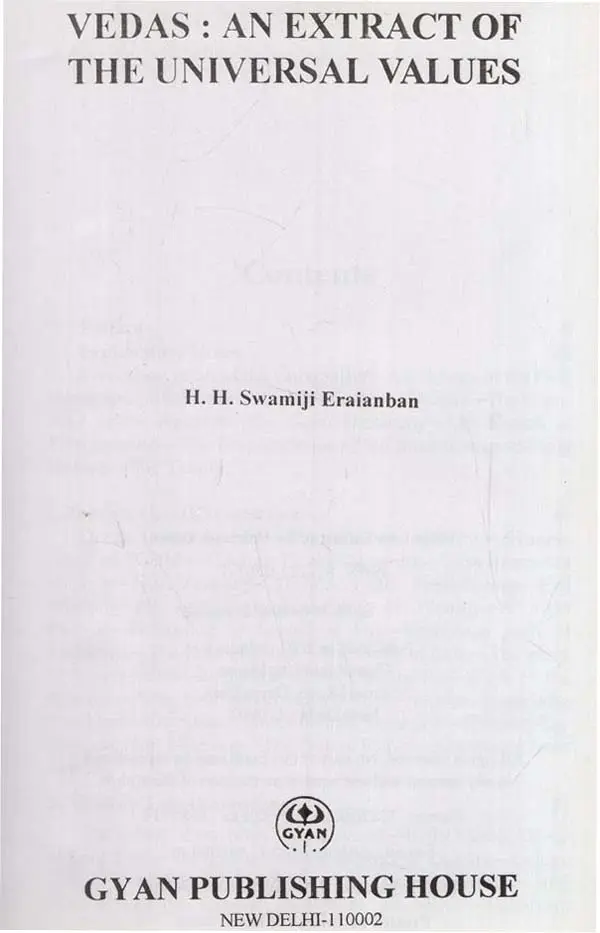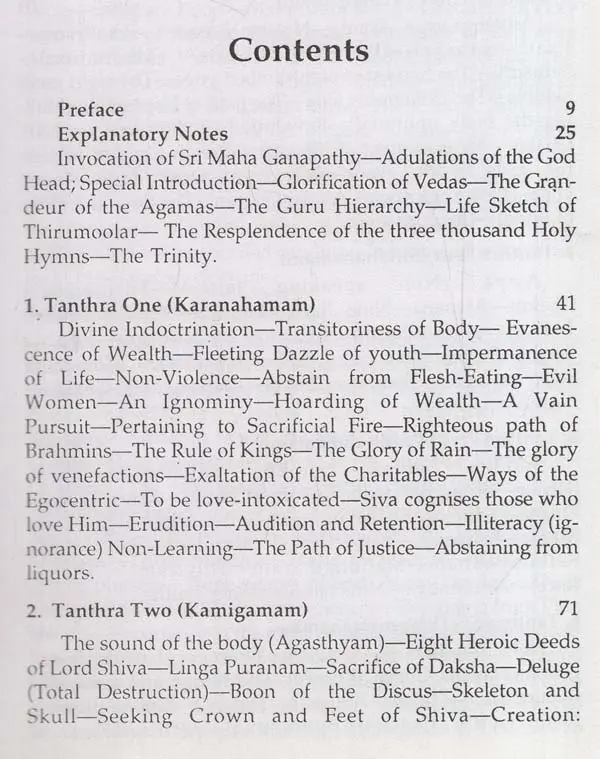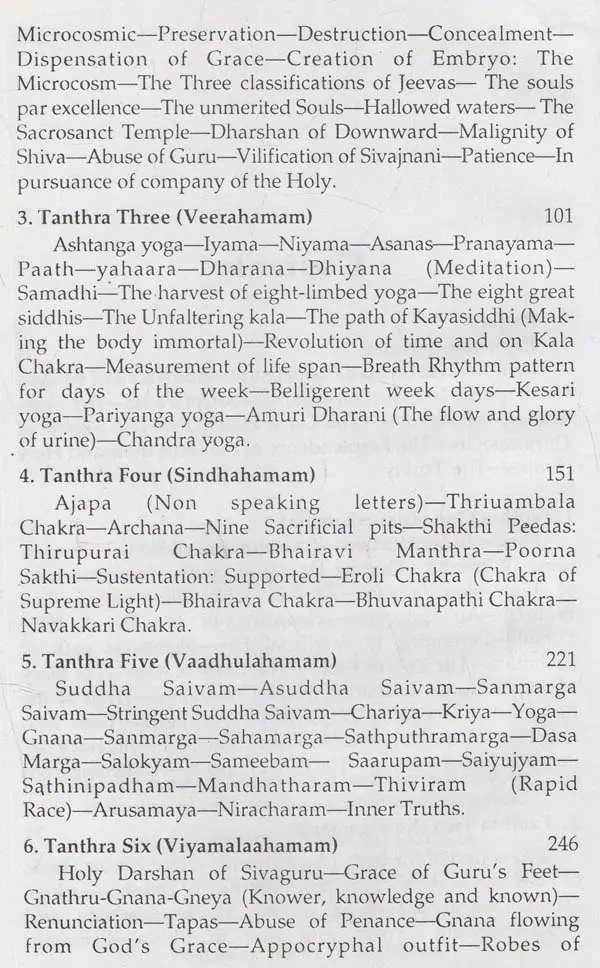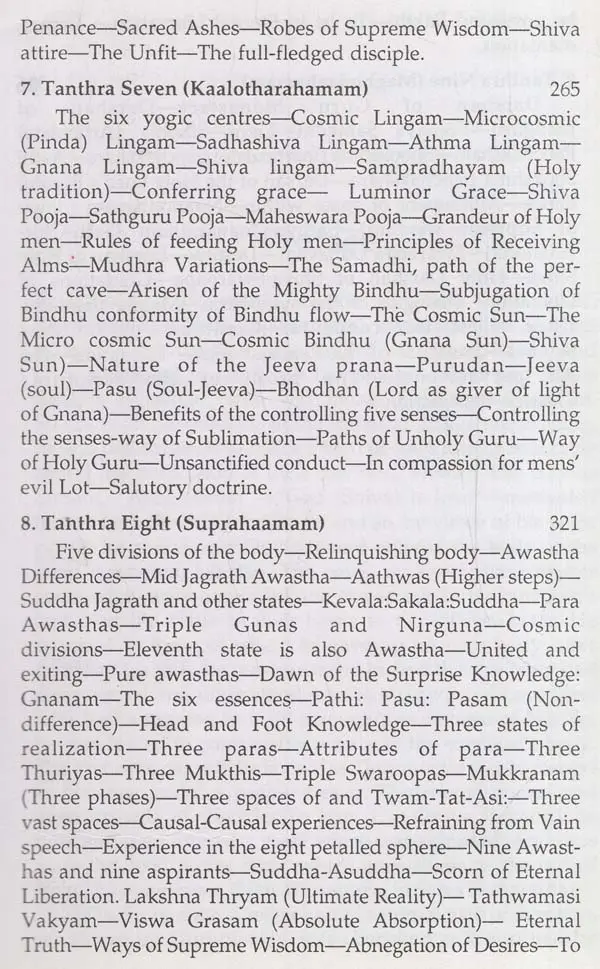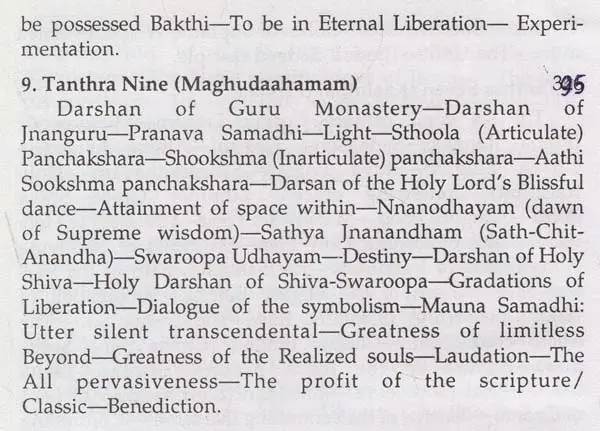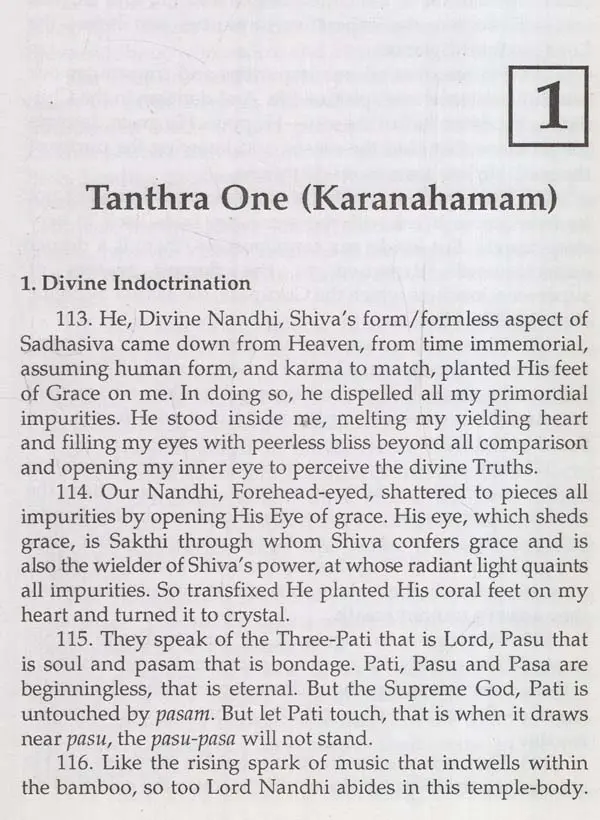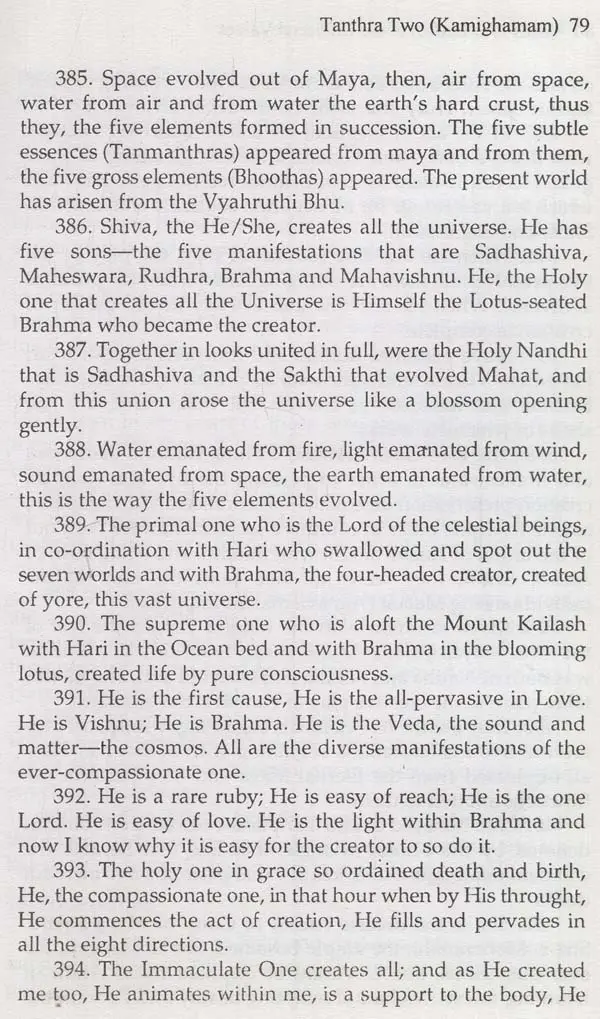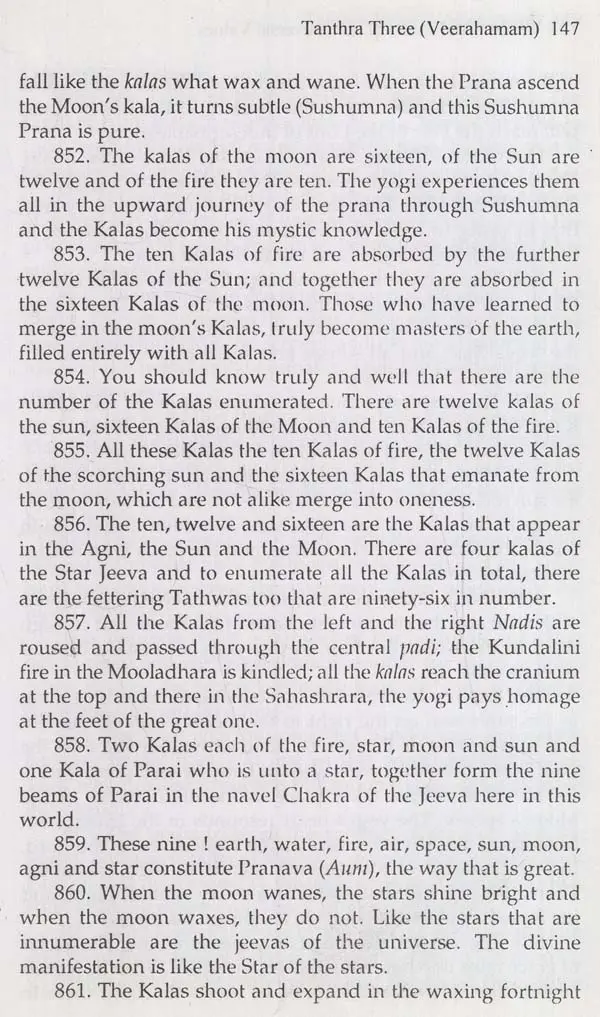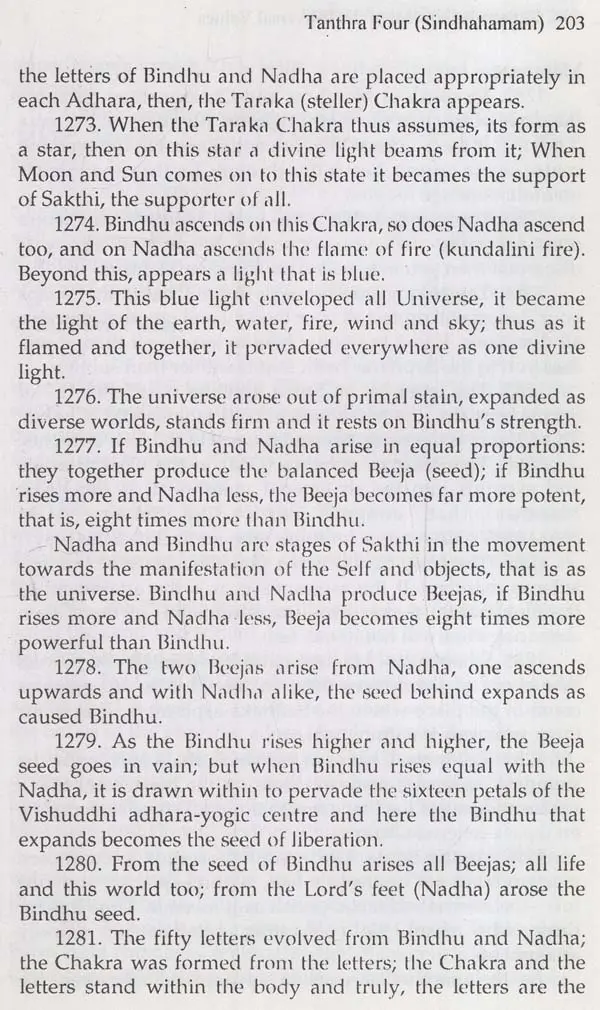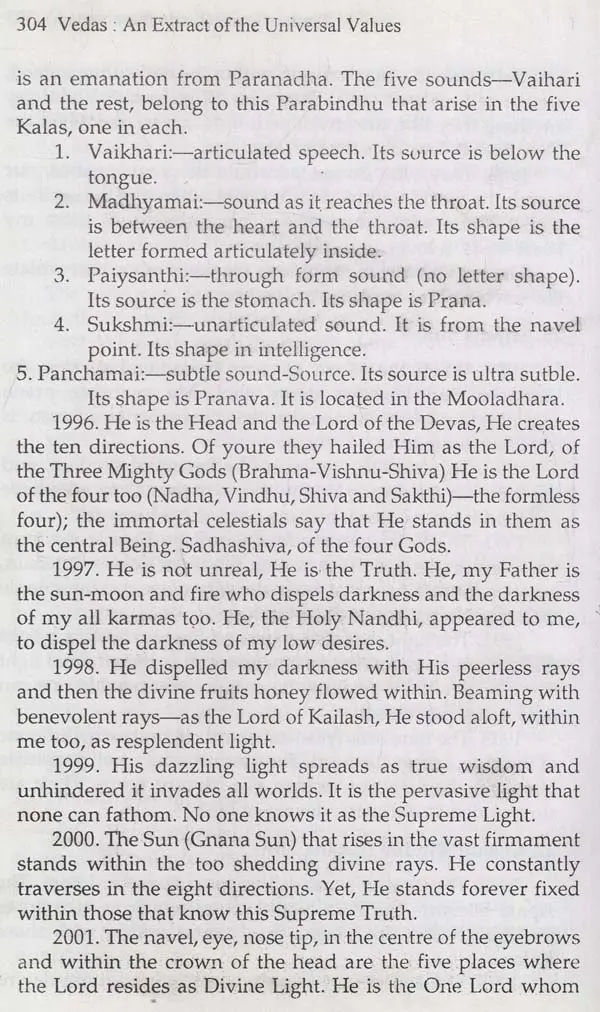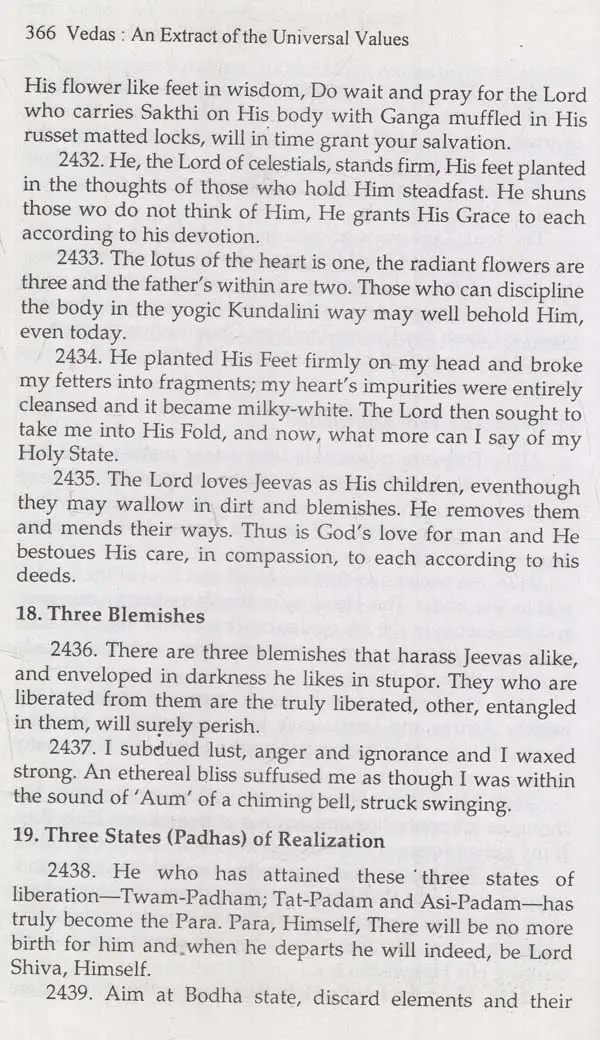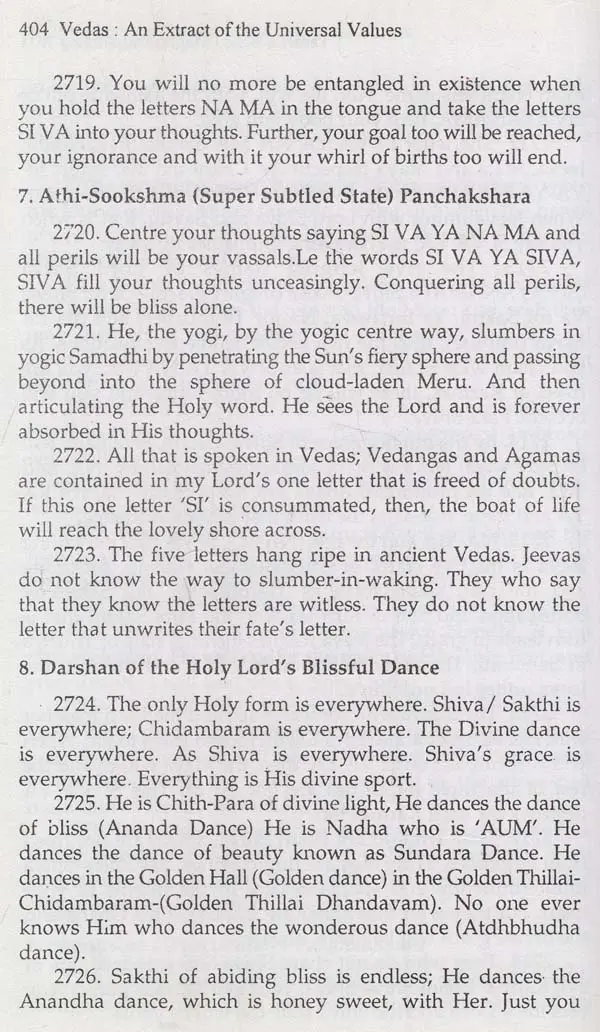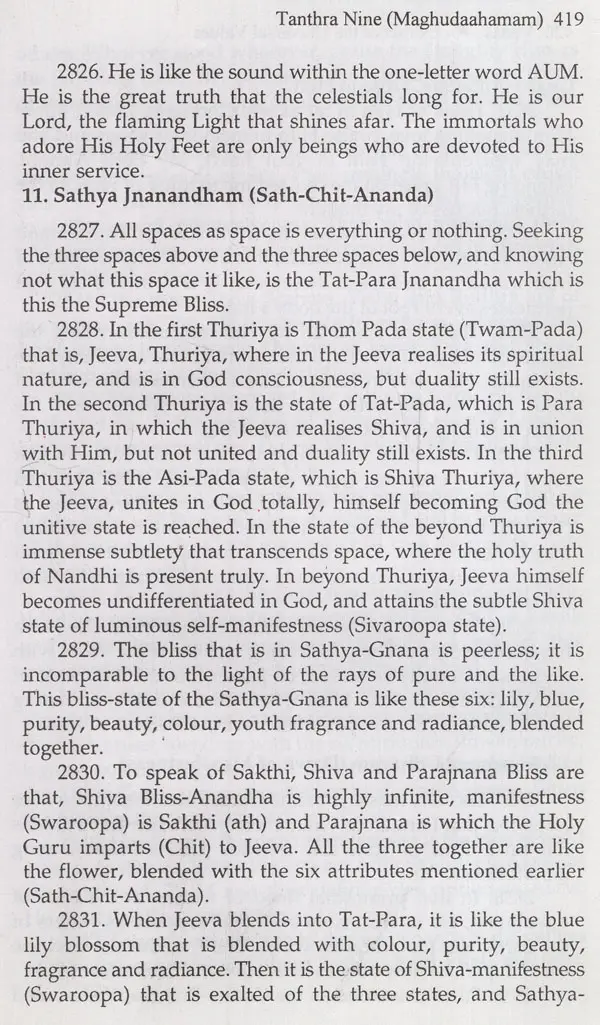
Vedas: An Extract of the Universal Values (An Old & Rare Book)
Book Specification
| Item Code: | UAN730 |
| Author: | H. H. Swamiji Eraianban |
| Publisher: | Gyan Publishing House, New Delhi |
| Language: | English |
| Edition: | 2001 |
| ISBN: | 8121207673 |
| Pages: | 454 |
| Cover: | HARDCOVER |
| Other Details | 8.80 X 5.80 inch |
| Weight | 690 gm |
Book Description
The composition consists of 3000 verses and is divided into 9 Thanthras or chapters (Karanakamam, Kamigamam, Veerahamam. Sindhahamam, Vadhulahamam, Viyamalahamam, Kalotharahamam, Suprahamamam, Mahudahamam).
The splendid echo of the Rig Veda dictum "Ekam Sat Vipra Bahudhta Vadhanti (Realilty is one, though the sages speak of it variously.) This non sectarian approach to the ultimate reality is happily the tradition of the South and as much as the North. Thirmanthiram is a Tamil classical treasure and it insists on the Universal truths of our four Vedas and it is the extract of all Dharmas and principles of life. If one concentrates on this book thoroughly, then, there is nothing more to be realized, in the sense, it is considered to be the Tamil Veda and it is meant for all. Let us read and practise the principles of "Holy Thirumanthiram" and thus we make our life, to be saturated with the Enternal Bliss.
He is the son of Shri C. Arumugun Achari and Srimadhi Subbammal, native of Dinidigul, one of the ancient towns of Tamil Nadu. Subramanium was blessed by his guru and the Guru called him the 'lover of God and God's love is His' in this sense, he is called Iraianban and his admirers respectfully call him Swamiji.
Swamiji Iraianban is not only a writer, poet, orator, he is well-versed in palmistry, astrology, and music as.
Saiva Sidhanttha, a religious and spiritual path of devotion, set ablaze by Thirumoolar, was cherished and nurtured by the Nayanmars, and it helped greatly in the flourishing of Tamil culture.
Saiva Siddhanttha system pivots on the PATI-PASU PASAM triangle Pathi or the master stands for God. Pasu is the individual soul in ignorance. And Pasam is the bondage of may that binds the individual soul. These three are entities, hence Savia Siddhantha appears to be pluralistic realism Suddhadvaitha is another name "Sudda" means unequalified and "Advaita" is "duaita" devoid of duality. These three entities though real in existence, are inseparably united with Him who is the Supreme reality.
Siva, the Pathi, also called Hara, Isa, Natha, Nandhi, etc. is the first cause. Sakthi is the instrumental cause in creation. And maya or prakrithi is the material cause for the world. This work of creation is likened to the potter who fashions the pot, the staff and the wheel used are the instrumental causes and clay the material cause for the pot: Siva and Sakthi are represented by the form of Sri Arthanareeswara swarupam. Sakthi is conscious, unchanging, eternal energy, the Svarupa sakthi of the Lord. The subtle distinction between pure matter (Suddha or Sattvika jagath) and defiled matter (Asutha or prakritha jagath) is mahamaya (Bindu or Vidya) in pure creation and maya or Asuddha Bindhu in defiled creation. Both are innert and different from Svarupa Sakthi, the essence of the Lord.
Siva, the Lord, is not just one of the Trimurthis of the purnas, but the source from whom the Trimurthis emanate. He is omnipresent, both immanent and transcendent and is called Viswaroopa and his vadhika-universal in form and beyond the universe. Again, He is with form and without form (Sarupa and Arupa), the Linga symbolizing the formless form of Siva. He, the Ashtamoorthi, embodies as the five elements and man; has eight qualities-Innocence, purity, self knowledge, omnipotence and bliss, and Nirguna, having quality but not tainted by the gunas of prakrithi. He has five functions creation (Sristi), preservation (Sthithi), destruction (Samkara), obscuration (Thirodhana), liberation (Anugraha) and unlike Maha Vishnu, He does not take several avatars (Incarnations).
**Contents and Sample Pages**
